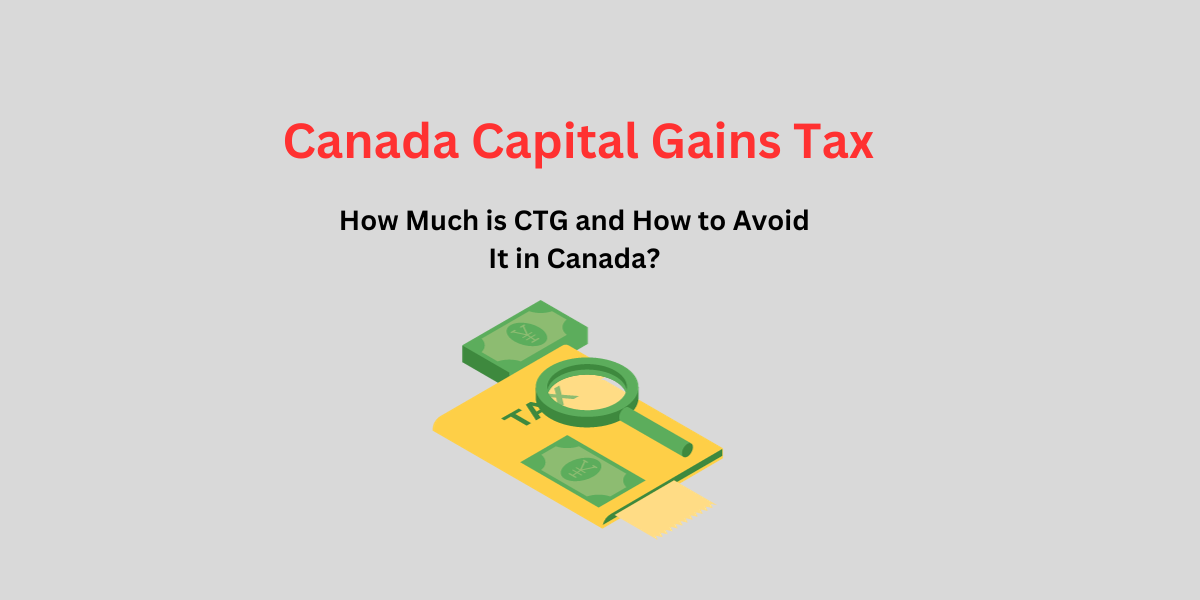Check out this article to learn all about the Capital Gains Tax in Canada. It explains what it is and gives tips on how to avoid it.
- Canada Capital Gains
- What is Canada’s Capital Gains Tax
- Capital Gains Tax Canada Overview
- Canada’s Capital Gains Tax Rates
- Calculating Canada’s Capital Gains Tax
- How to Avoid Capital Gains Tax
- People May Also Ask
- How much capital can I make without paying tax in Canada?
- Can I avoid paying capital gains tax?
- What is the rule for capital gains tax in Canada?
- Is the capital gains tax always 50% in Canada?
- What is the capital gains tax rate in Canada in 2023?
- How is capital gains tax handled in Canada?
Canada Capital Gains
If you made money by selling something like an investment this year, you might need to pay a capital gains tax. In Canada, when you sell something for more money than you paid, you have to pay a capital gains tax. However, do not worry, if you did not make any money, there is no tax for you.
In Canada, only half of the money you make from selling something is taxed. They add this taxed amount to the money you make in a year. With the current tax rates in Canada, the most you would have to pay for this tax is 27%.
If you recently sold something big, you need to read this article about the Capital Gains Tax in Canada. We will talk about how much tax you might owe and how they figure it out. Keep reading to learn more!
What is Canada’s Capital Gains Tax
When you sell something valuable, like a stock or a property, and make more money than you spent to get it, that is called a capital gain. The money you have to pay from what you earn is the capital gains tax.
Usually, anything you buy to make money from, like investments, can be taxed this way. When you make a capital, it is considered income for that year. Since it’s income, the government has rules about taxing it.
Capital Gains Tax Canada Overview
| Name of the Article | Capital Gains Tax Canada |
| Regulator | Canada Revenue Agency |
| Objective | To tax the income earned on a capital transaction |
| Canada CGT Rates | 50% of Capital Gain |
| Payment | Along with the Income-tax return |
| Visit the official website | canada.ca |
Canada’s Capital Gains Tax Rates
When you sell a house that was not always your main home, the money you make is taxed just like any other capital. In Canada, they use half of your capital, and then your tax rate based on your income applies to that.
Some people think you have to give away half of what you earn, but that is not true. You only pay taxes on half of your capital. However, if you are a day trader making a living by buying and selling houses, they might tax all your capital.
Important Links
Important Links
Calculating Canada’s Capital Gains Tax
When you sell something important, you have to tell the government how much capital you made that year in Canada. They take half of that capital and tax it based on your tax rate.
To figure it out, you take your capital, divide it by two, and that is the amount you add to your income. Then, you pay income tax based on how much you earn. Let us break it down with an example:
- Imagine you bought a house for $800,000 and sold it for $700,000.
- Capital made = $800,000 – $700,000 = $100,000
- Taxable Capital Amount = $100,000 / 2 = $50,000
To put it simply, you have to pay taxes on $50,000 of capital. This means your total income for the year goes up by $50,000. After that, you look at the tax rate for your income level and pay your income tax accordingly.
How to Avoid Capital Gains Tax
In Canada, some types of investments do not have capital gains tax. We will tell you about situations where you do not have to pay taxes on the money you make.
- If you sell the home you live in, you don’t pay capital gains tax; it is allowed by the CRA.
- Canadians can use tax-loss harvesting to lower capital gains taxes. You can use losses to balance out gains, and if you do not use them all, you can save them for up to three years.
- Investments in special accounts like RRSP, TFSA, or RESP can help you lower or get rid of capital gains taxes.
- Donating investments, like stocks or mutual funds, can also reduce or eliminate your capital gains tax.
- If you own a small business and sell it, you might be able to lower or completely avoid capital gains tax.
- Because the government spent a lot, the deficit became too big to manage. Now, there might be a chance that the capital gains tax rate will go up.
That is the end of our article. We had fun writing about Canada’s Capital Tax, and we hope you had fun reading it, too.
People May Also Ask
How much capital can I make without paying tax in Canada?
You only pay tax on half of your capital in Canada. For example, if you earned $5,000 from selling stocks, you pay tax on only $2,500.
Can I avoid paying capital gains tax?
If your long-term gains from Equity Mutual Funds are less than Rs. 1 lakh in a year, you do not have to pay any capital gains tax.
What is the rule for capital gains tax in Canada?
In Canada, only 50% of your capital is taxable. They add it to your yearly income and tax it based on your income level.
Is the capital gains tax always 50% in Canada?
Yes, in Canada, half of your capital is taxable. If you sell something for more than you paid, you add 50% of that capital to your income.
What is the capital gains tax rate in Canada in 2023?
The rule stays the same in 2023 – 50% of your capital is taxable. If you sell something for a higher price, 50% of that gain is added to your income.
How is capital gains tax handled in Canada?
In Canada, only half of your capital is taxed. They add that to your income, and then your personal tax rate is used to figure out how much tax you owe.

I am a passionate technology and business enthusiast, constantly exploring the intersection where innovation meets entrepreneurship. With a keen eye for emerging trends and a deep understanding of market dynamics, I provide insightful analysis and commentary on the latest advancements shaping the tech industry.
